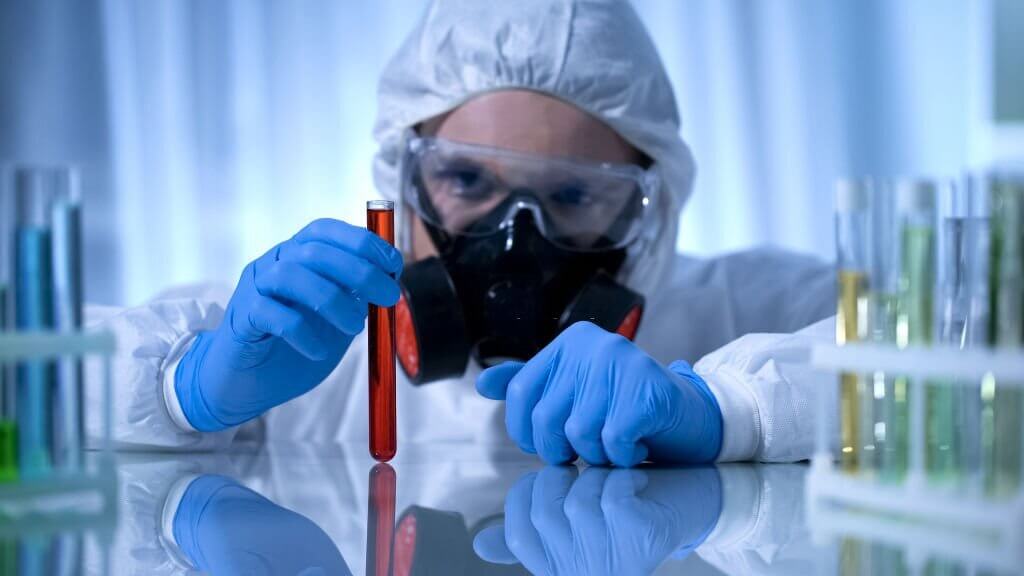News and Blogs
A Full Comparison of Inactivated and Non-inactivated VTM

What are Inactivated and Non-inactivated Viral Transport Media?
Viral transport media (VTM) are designed to preserve and transport viruses for laboratory analysis. There are two main types - inactivated and non-inactivated. Inactivated VTM contains chemicals that destroy the infectivity of viruses while preserving their genetic material. This allows safe handling and transport of specimens. Non-inactivated VTM protects viral infectivity so that viruses remain "alive" and can be cultured in the lab. The choice of VTM depends on the intended downstream application.
What Chemicals are Used for Viral Inactivation?
Common inactivating agents in VTM include guanidine thiocyanate, Triton X-100, and gamma irradiation. Guanidine disrupts viral structures by denaturing proteins and lipids. Triton X-100 is a detergent that breaks down lipid membranes. Gamma irradiation induces DNA damage through free radicals. While killing viruses, these chemicals maintain the integrity of viral nucleic acids for PCR-based molecular testing.
How Does Non-inactivated VTM Work?
Non-inactivated VTM typically contains cell culture medium, buffers, antibiotics, and fungicides. Nutrient-rich medium provides an environment for viruses to remain stable and infectious. Buffers maintain physiological pH to preserve viability. Antibiotics and antifungals suppress microbial overgrowth. This type of VTM keeps viruses "alive" so they can be isolated and propagated in cell cultures for further characterization and vaccine development.
What are the Applications of Each Type?
Inactivated VTM is suited for molecular diagnostics, as it inactivates biological risks but retains viral RNA/DNA. It allows safe transport of specimens for PCR testing at reference labs. Non-inactivated VTM is useful when live viruses are needed, like virus isolation in cell culture or live attenuated vaccine production. The choice depends on balancing biosafety with downstream needs.
What are the Limitations of Each Type?
A limitation of inactivated VTM is that inactivating agents may inhibit some molecular assays, requiring additional processing steps to remove them. Handling infectious specimens also requires more precautions until inactivation occurs. For non-inactivated VTM, infectivity poses risks and necessitates higher biosafety levels. Shipping and handling of "live" viruses require stringent cold chain logistics as well. Moreover, non-inactivated specimens may have lower viral stability compared to inactivated ones.
| Feature | Inactivated VTM | Non-inactivated VTM |
|---|---|---|
| DNA degradation prevention | Prevents DNA degradation by inactivating cellular nucleases and other degrading enzymes | Does not prevent DNA degradation |
| Viability for live cell analysis | Not viable, DNA loses cellular activity | Viable, DNA retains cellular activity |
| Ease of DNA extraction | More difficult, may require additional processing steps | Relatively easy, standard extraction protocols |
| Long term storage stability | Stable for long term storage | Risk of DNA degradation over time |
| Transportation | Stable, suitable for shipping and transport | Unstable, not suitable for long distance shipping |
| Typical applications | Forensics, genetic studies needing long term storage | Research needing live cell analysis like cell culture, PCR |
How Should Specimens be Handled for Each Type of VTM?
With inactivated VTM, PPE and standard precautions are still needed when handling fresh specimens, before inactivation takes place. Once inactivated, samples can be processed in lower biosafety environments. For non-inactivated VTM, maximum containment safeguards are required until specimens reach the laboratory. All procedures manipulating live viruses should occur within BSL-3 facilities. Cold chain maintenance is critical during transport. Training on risks and appropriate practices is a must when working with infectious substances.
Inactivated and non-inactivated viral transport media serve complementary purposes. While inactivated VTM enables safe handling of specimens for molecular detection, non-inactivated VTM preserves viral infectivity for culture-based research and vaccine development. The choice depends on the laboratory's capabilities and the intended use of the viral sample.
Click to View → Mantacc Non-inactivated Viral Transport Media
Reference
van Bockel D, Munier CML, Turville S, Badman SG, Walker G, Stella AO, Aggarwal A, Yeang M, Condylios A, Kelleher AD, Applegate TL, Vallely A, Whiley D, Rawlinson W, Cunningham P, Kaldor J, Guy R. Evaluation of Commercially Available Viral Transport Medium (VTM) for SARS-CoV-2 Inactivation and Use in Point-of-Care (POC) Testing. Viruses. 2020 Oct 23;12(11):1208. doi: 10.3390/v12111208. PMID: 33114233; PMCID: PMC7690900.
Related Posts
The Hidden Truth of Group B Streptococci Survival in Amies Transport Medium
Why Charcoal is Crucial in Amies Transport Medium for Gonorrhea Detection
Amies Transport Medium: Ensuring Sterility and Stability at Room Temperature
Your One-stop Source For Everything Amies Transport Medium
Everything You Need To Know About Cary-Blair Transport Medium
Findings About Dog Antimicrobial Resistance in Growth Medium






